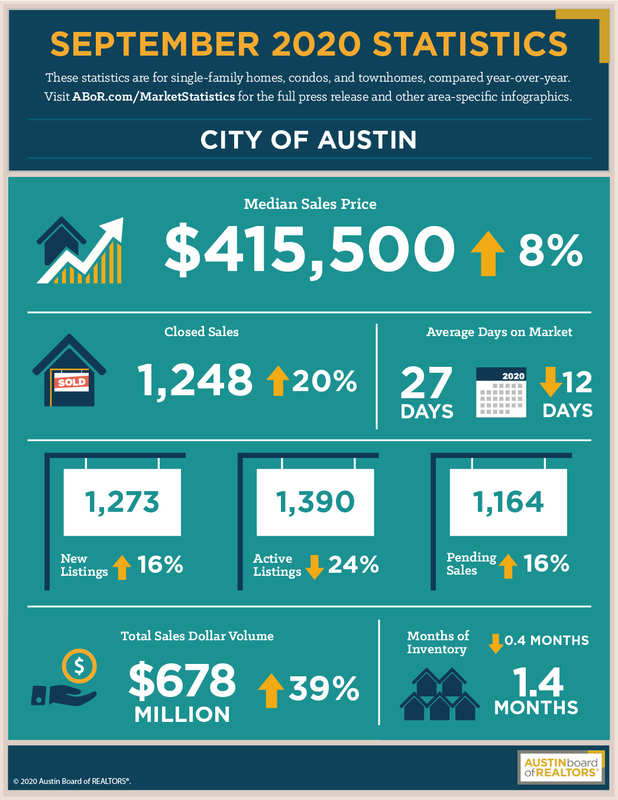Updated about 5 years ago on . Most recent reply
September 2020 Austin Market Report
The Austin area real estate market continues displaying incredible resiliency in the face of extremely low housing inventory and economic challenges related to the COIVD-19. Home sales typically slow in the fall, but pent up demand due to the earlier shelter-in-place order saw the selling season extend into September. Here are some highlights from the latest Central Texas Housing Market Report released by the Austin Board of REALTORS®:
- Home sales in the Austin-Round Rock MSA were up 31.5% year over year and up 20% in the City of Austin proper.
- The median sales price in the MSA was up 12% year over year to $355,000 and up 8% in Austin to $415,000.
- Inventory remained critically low, dropping 1.3 months to 1.2 months of inventory in the MSA. Austin dropped 0.4 months year over year to 1.4 months. (A balanced market is roughly 6.5 months of inventory).
- There were 49% fewer active listings on the market compared to this time last year in the metro area. Austin itself was down 24%.
Inventory remains a major constraint on the Austin area market. Demand shows no signs of flagging and has remained surprisingly consistent throughout the pandemic. Overall, then, the Austin-Round Rock MSA is poised to continue it’s near decade-long pattern of high demand, low inventory, and rising home prices.
Here are basic stats on residential sales for September 2020 for the City of Austin and the greater Austin area:


Take note of the significant 1.3 month decrease in inventory in the suburban and metro area outside of Austin. In September, inventory in the MSA actually dropped below that of Austin itself (1.2 months vs. 1.4 months). Price growth in the MSA also outpaced that of Austin (12% increase vs. 8% increase). It will be interesting to see if this becomes a trend going forward as housing preferences and consumer behavior change in response to the pandemic and evolving workplace environment.
The major inventory decline in the suburbs and greater MSA--which we also saw in August--has something to do with fewer owners listing homes due to the pandemic who otherwise would have sold this year. It also has something to do with increased buyer demand for the suburbs from people wishing to get out of an apartment or other multi-unit rental situation and into a home. Those factors combine with the fact that suburban and outlying communities are more affordable, which is attractive to many of those who find they may be able to work remotely at least part of the time, if not full-time.
I'm curious what everyone else thinks. Aside from very likely long-lasting changes to how we view work and the role of the office, do you think there will be any drastic changes going forward for housing preferences and buyer behavior? Once the pandemic is behind us and things have returned to "normal," what durable, lasting changes in housing trends and consumer behavior do you think we'll see going forward?




